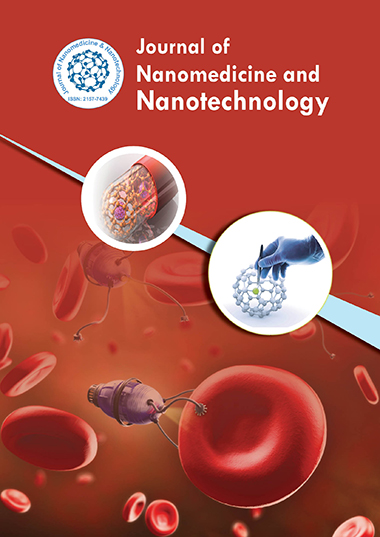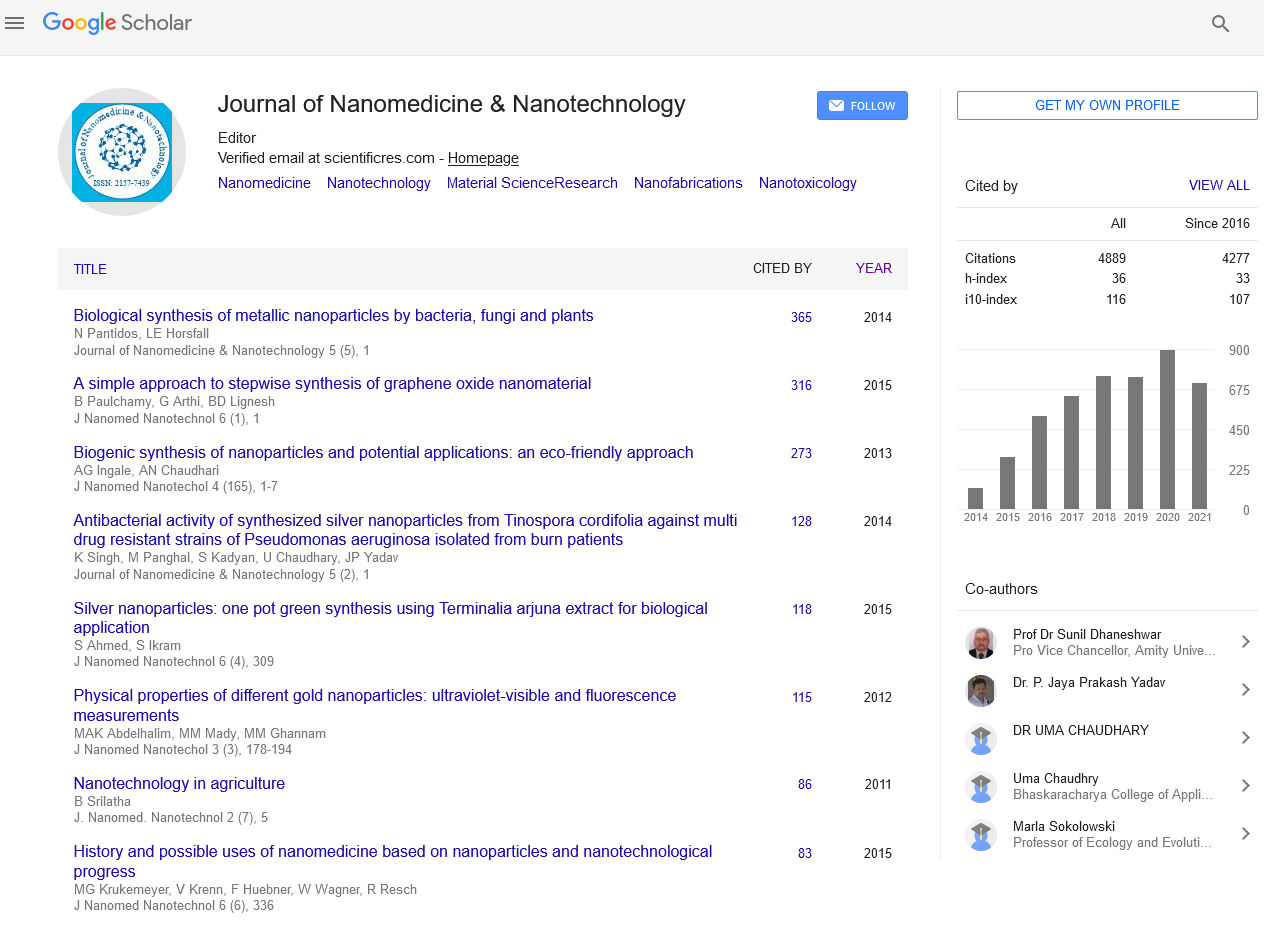Indexed In
- Open J Gate
- Genamics JournalSeek
- Academic Keys
- JournalTOCs
- ResearchBible
- China National Knowledge Infrastructure (CNKI)
- Scimago
- Ulrich's Periodicals Directory
- Electronic Journals Library
- RefSeek
- Hamdard University
- EBSCO A-Z
- OCLC- WorldCat
- SWB online catalog
- Virtual Library of Biology (vifabio)
- Publons
- MIAR
- Scientific Indexing Services (SIS)
- Euro Pub
- Google Scholar
Useful Links
Share This Page
Journal Flyer

Open Access Journals
- Agri and Aquaculture
- Biochemistry
- Bioinformatics & Systems Biology
- Business & Management
- Chemistry
- Clinical Sciences
- Engineering
- Food & Nutrition
- General Science
- Genetics & Molecular Biology
- Immunology & Microbiology
- Medical Sciences
- Neuroscience & Psychology
- Nursing & Health Care
- Pharmaceutical Sciences
Antimicrobial potential of Trichoderma-fused silver nanoparticles against pathogenic bacterial and fungal strains
15th World Medical Nanotechnology Congress
October 18-19, 2017 Osaka, Japan
Abhishek Mathur, Bina Pani Gupta and Vandana Shrivastava
Environmental Biotech & Engineering Co., India
Himalayan University, India
I.T.S Dental College, India
Posters & Accepted Abstracts: J Nanomed Nanotechnol
Abstract:
The genus Trichoderma and its metabolites are meant for antimicrobial activity against the microbial strain and thus it is considered to be natural antimicrobial agents. Silver is also known as an antimicrobial agent and is utilized in several antimicrobials and medications. In the present investigation, the nanoparticles were prepared both of Trichoderma and Ag+ separately and further fused Trichoderma and Ag+ nanoparticles were also prepared. Trichoderma harzianum secretes secondary metabolites which act as a capping and reducing agent. The biosynthesized silver nanoparticles (AgNps) were characterized by UV-Vis spectroscopy and transmission electron microscopy (TEM). UV-Vis spectra of silver and Trichoderma nanoparticles showed absorption spectra at 450 nm and 430 nm, respectively while fused nanoparticles showed absorption spectra at 415 nm corresponding to the surface Plasmon resonance of silver nanoparticles. The size and morphology of the fused nanoparticles was determined by TEM, which shows the formation of spherical nanoparticles in the size range of 8-24 nm. The Trichoderma-fused silver nanoparticles were assessed against pathogenic microorganisms viz., Staphylococcus aureus, Acinetobacter baumannii, Bacillus cereus, Escherichia coli, Salmonella Typhi (PTCC 1609), Pseudomonas aeruginosa, Aspergillus niger and Candida albicans. The antimicrobial effect of silver nanoparticles against the pathogenic microorganisms was varied. Yet Salmonella Typhi followed by Pseudomonas aeruginosa, were more sensitive and Acinetobacter baumannii was relatively less sensitive. In addition, the antimicrobial effect of Trichoderma-fused silver nanoparticles is dependent not only on the chemical property (such as formation of free radical) but also depended on their shapes and sizes.


